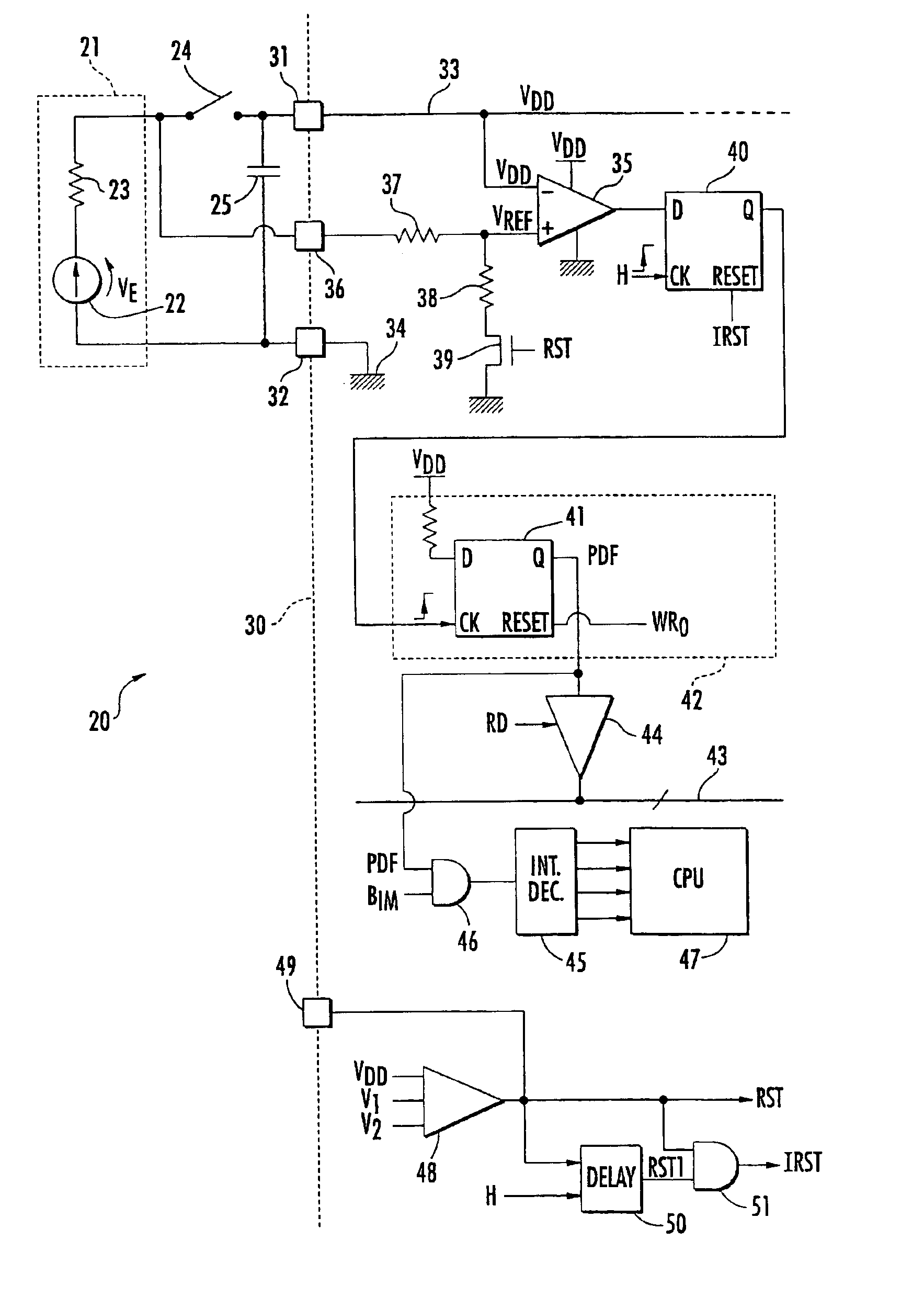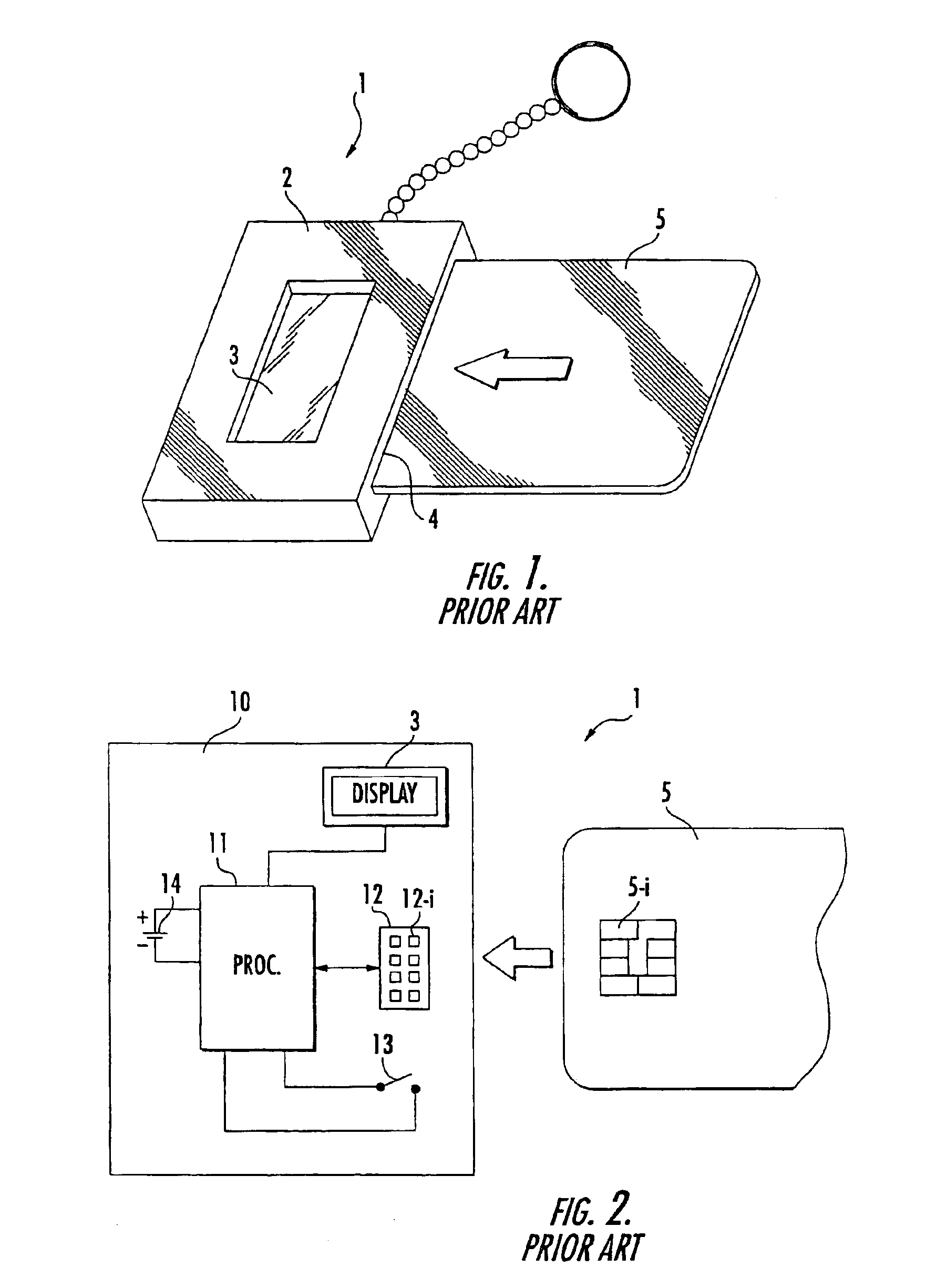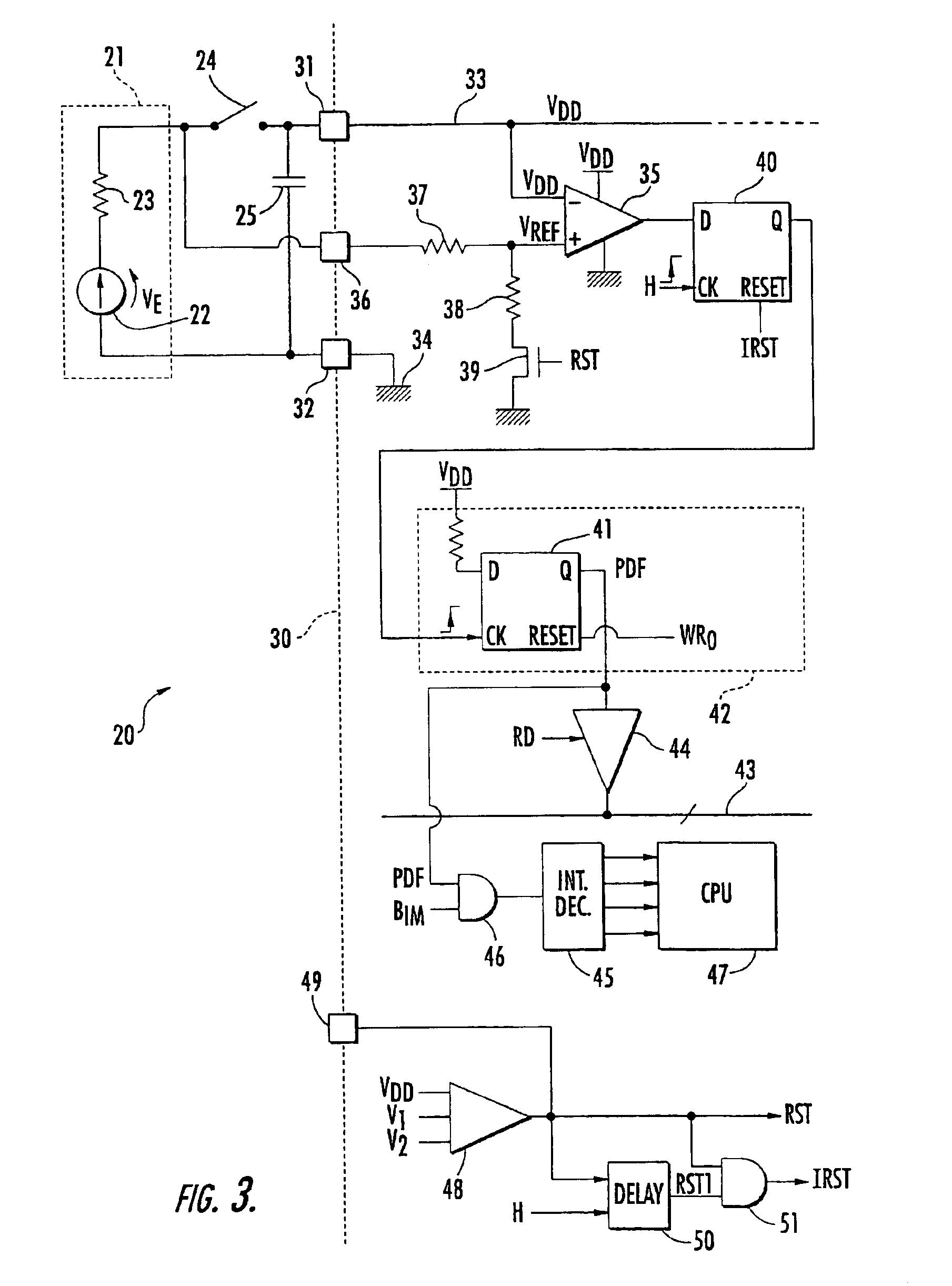Card reader comprising an energy-saving system
a card reader and energy-saving technology, applied in the field of smart card readers, can solve the problems of system complexity, limited battery life time, and non-zero current consumption, and achieve the effect of suppressing the power consumption of a microprocessor, straightforward and low cos
- Summary
- Abstract
- Description
- Claims
- Application Information
AI Technical Summary
Benefits of technology
Problems solved by technology
Method used
Image
Examples
first embodiment
[0037]the detection means will now be discussed with reference to FIG. 3. The detection means comprises a comparator 35, the negative input of which is connected to the power supply terminal 31 and receives the power supply voltage VDD. The positive input of the comparator 35 receives a reference voltage VREF.
[0038]Advantageously, the reference voltage VREF is produced by the voltage VE, without passing through switch 24, using a special terminal 36 of the microprocessor 30 directly connected to the anode of battery 21. Here, the reference voltage VREF is picked up at the middle point of a voltage divider bridge comprising two resistors 37 and 38. Resistor 37 is connected to terminal 36 and resistor 38 is connected to ground via a switch 39, for example, a MOS transistor. This switch 39 is driven by a reset signal RST from the microprocessor 30, as described later on.
[0039]The output of the comparator 35 is applied to the D input of a synchronous D flip-flop 40. The clock input CK o...
second embodiment
[0049]the detection means will now be discussed with reference to FIG. 5. The illustrated reader 60 comprises different means for detecting opening of the switch 24. The comparator receiving the reference voltage VREF is not used. The terminal 36 of the microprocessor 30 is connected to the anode of the battery 21 via a second travel end switch 61, which opens and closes at the same instant as the switch 24. For example, switch 61 is placed adjacent to the switch 24 in the housing.
[0050]Terminal 36 is connected to the D input of flip-flop 40 via an inverter circuit 62, such as an inverting gate or a trigger with hysteresis. When switch 61 is open, the input of the inverter circuit 62 is held in the low state by a resistor 63. The resistor 63 has a very high value and is connected to ground. Except for these differences, the other components of reader 60 are the same as those of reader 20 of FIG. 3, and will not be further described.
[0051]When switch 61 opens, the output of the inver...
PUM
 Login to View More
Login to View More Abstract
Description
Claims
Application Information
 Login to View More
Login to View More - R&D
- Intellectual Property
- Life Sciences
- Materials
- Tech Scout
- Unparalleled Data Quality
- Higher Quality Content
- 60% Fewer Hallucinations
Browse by: Latest US Patents, China's latest patents, Technical Efficacy Thesaurus, Application Domain, Technology Topic, Popular Technical Reports.
© 2025 PatSnap. All rights reserved.Legal|Privacy policy|Modern Slavery Act Transparency Statement|Sitemap|About US| Contact US: help@patsnap.com



